The Stinky Monkey of Florida
Reading Time: 15 min
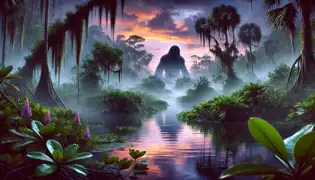
About Story: The Stinky Monkey of Florida is a Legend from united-states set in the Contemporary. This Descriptive tale explores themes of Nature and is suitable for All Ages. It offers Cultural insights. A pungent tale of mystery and nature’s hidden wonders in the Everglades. .
In the sultry heart of Florida’s Everglades, where the humid air shimmers over tangled mangroves and hidden waterways, a legend has long whispered its way through the swampy underbrush—a legend of a creature so bizarre and notorious that even the most hardened locals dare not speak its name after dusk. They call it the Stinky Monkey of Florida, an enigmatic beast whose presence is heralded not by roars or howls but by a pungent, overpowering odor that drifts through the air like a warning. No one knows exactly when the creature first appeared, but stories of its uncanny stench and elusive nature have been passed down through generations, woven into the fabric of Everglades folklore. This is a tale of mystery, adventure, and the unexpected wonders that hide beneath the surface of our natural world. It all began on a muggy summer evening when the sky was a muted palette of purple and orange, and the air was heavy with secrets. Local fisherman and swamp guides spoke in hushed tones of a curious figure glimpsed darting between ancient cypress trees. At first, the creature seemed almost mythical—a mischievous monkey with eyes full of mischief and a coat that glistened with the sheen of the swamp. But there was something unmistakably odd about it: a stench that clawed at the nostrils and lingered long after the creature had vanished into the bracken. Marlon, a seasoned guide known for his intimate knowledge of the Everglades, was among the first to encounter this unusual visitor. He recalled the encounter with a mix of awe and repulsion: “I’ve seen my fair share of critters out here, but nothing—absolutely nothing—smelled as foul as that day. It was as if the swamp itself had decided to expel its rotten secrets.” His words, told around flickering campfires and over shared meals in rustic shacks, set off a chain of events that would soon ripple through the small communities scattered around the wetlands. Even the elders, those who claimed to remember the old tales of native spirits and mysterious guardians of the wild, began to murmur that the stench was no ordinary odor—it was the warning of a disturbed balance between nature and myth. Some believed the creature was a cursed soul from centuries past, while others maintained it was a genetic anomaly spawned by the unique ecosystem of the Everglades. Whatever the truth, the legend of the stinky simian had taken root, and with it came an irresistible pull for the curious and the brave. In the twilight shadows of the marsh, the creature’s silhouette would flicker between the towering trees, a phantom that blurred the line between nightmare and fable. Its eyes, gleaming with an almost human intelligence, hinted at secrets that the murky depths of the Everglades had long kept hidden. As locals exchanged knowing glances and travelers questioned their own senses, the myth grew, fueled by half-remembered details and whispered warnings beneath starry skies. News of the stinky monkey spread faster than a summer wildfire. Curious onlookers, amateur naturalists, and even skeptical journalists ventured into the wetlands in search of proof, each with their own theories about the creature’s origins. Among them was Teresa, a young reporter with a penchant for uncovering truths that lurked in the margins of society. With her notebook in hand and determination in her eyes, Teresa set off to document the story that had everyone talking. On a humid morning that hinted at an approaching storm, Teresa found herself navigating the labyrinth of waterways and sun-dappled trails. Every rustle in the undergrowth and every distant splash of water sent her pulse racing, as if the Everglades themselves were testing her resolve. It was during one of these moments of quiet trepidation that she caught her first, unmistakable whiff of the fabled odor. The stench was overpowering—sharp, acidic, and yet, oddly organic, as though it carried the secrets of decay and rebirth all at once. Teresa’s heart pounded as she ventured closer to a cluster of gnarled cypress trees. There, half-hidden among the tangled roots, she caught a glimpse of movement—a flash of brown fur, a twitch of a tail, and a pair of intelligent eyes that seemed to scrutinize her every move. For a heartbeat, time itself seemed to pause. The creature was small, agile, and exuded a wild, untamed aura. Before Teresa could steady her trembling hand to capture a photo, the stinky simian darted away into the dense foliage, leaving behind only the lingering, unforgettable odor. The encounter left her both terrified and exhilarated. “It was like nothing I’ve ever experienced,” Teresa later confided to a local diner full of eager listeners. “The creature moved with a purpose, almost as if it knew I was there, and its smell—it’s not something you can describe; it just invades every sense.” The locals, who had long grown accustomed to tall tales and mysterious happenings, nodded knowingly. Some even remarked that the monkey’s odor was a kind of natural alarm—a reminder that the balance of the Everglades was delicate and should never be taken for granted. With her heart still pounding and her curiosity fully ignited, Teresa began to piece together the fragments of the legend. Could this stinky monkey be a solitary oddity, or was it merely the herald of something larger lurking beneath the serene surface of the swamp? Determined to learn more, she resolved to follow the faint trail of clues that had now become all too tangible. In the days that followed her initial encounter, Teresa dove headfirst into the task of unraveling the mystery behind the stinky monkey. She spent hours combing through local archives, interviewing long-time residents, and even consulting with biologists familiar with the region’s unique wildlife. Every conversation seemed to add layers of complexity to the story. According to local lore, the creature had been seen for decades, its appearances sporadic but always accompanied by a sudden, inexplicable stench that permeated the area. Some argued that the monkey was an escapee from an old, forgotten primate research facility—a genetic experiment gone awry. Others suggested it was an undiscovered species, perfectly adapted to the harsh, competitive environment of the Everglades. One elderly man, whose voice trembled with the weight of years, insisted that the stench was the “sorrow of the swamp,” a manifestation of nature’s anguish over human encroachment. These varied accounts painted a picture of a creature steeped in both natural mystery and human tragedy. Determined to capture hard evidence, Teresa teamed up with Dr. Luis Ramirez, a pragmatic yet passionate zoologist who had dedicated his career to studying the bizarre creatures of the Everglades. Dr. Ramirez, who had long suspected that the ecosystem held many secrets, was intrigued by the reports. He explained, “The Everglades is a living mosaic, where evolution can take the most unexpected turns. A creature like the stinky monkey might well be a product of its environment—a survival mechanism evolved in response to the pressures of a competitive, unforgiving habitat.” Together, they embarked on a series of nocturnal expeditions into the heart of the marsh. Armed with infrared cameras, chemical detectors, and an assortment of recording devices, they traced faint signs of the creature’s passage—disturbed mud, broken fronds, and the unmistakable, clinging odor that had already become the hallmark of its presence. Night after night, they ventured deeper into the murky wilderness, their excitement mingling with an ever-present sense of foreboding. As the investigation unfolded, Teresa found herself recording not just the creature’s elusive appearances but also the rich tapestry of life that thrived in the swamp. She chronicled the interplay of predator and prey, the delicate balance of the ecosystem, and the enduring spirit of the local community. Each discovery lent weight to the idea that the stinky monkey was more than just a solitary oddity—it was a symbol of the mysteries that lay hidden in nature’s most remote corners. With mounting evidence and a growing sense of urgency, Teresa and Dr. Ramirez planned an ambitious expedition into a section of the Everglades that few dared to explore. This remote area, known by locals as “The Blackwater Reach,” was notorious for its labyrinthine waterways and the eerie silence that often shrouded its depths. It was here that the creature was rumored to be most active, its presence marked by an almost supernatural aura that chilled the bone. They set out early one misty morning, their small airboat cutting a determined path through the still waters. The landscape around them was otherworldly—towering trees draped in Spanish moss, tangled vines that seemed to guard ancient secrets, and waters that reflected a sky as murky as a forgotten memory. As they navigated the twisting channels, every rustle of leaves and every ripple in the water felt laden with hidden significance. During the journey, the duo encountered signs that both excited and unnerved them. They found strange, large paw prints along the muddy banks and noticed clusters of withered vegetation where the odor had been particularly potent. At one point, while pausing at the edge of a stagnant pool, they heard a series of soft, almost mournful chattering sounds echoing through the mist. The sound was unlike any bird or animal call they knew—it was as if the swamp itself was speaking in a language older than time. Then, just as the fog began to lift slightly, there it was. Emerging from behind a curtain of hanging moss, the stinky monkey appeared once again. Its eyes shone with an uncanny luminescence, and its fur—matted and wild—seemed to merge with the shadows. For several excruciating minutes, time seemed to stand still as the creature regarded them with an inscrutable expression. In that moment, both Teresa and Dr. Ramirez felt an overwhelming mix of reverence, fear, and a deep, instinctual recognition that they were witnessing something extraordinary. The creature moved with deliberate, almost ritualistic grace before disappearing back into the labyrinth of the Everglades. Its departure left behind an echo of its presence—a pungent reminder of nature’s mysterious ways. As the duo resumed their journey, their minds buzzed with questions. What was the purpose of this creature’s unusual odor? Was it merely a defensive mechanism, or did it serve a deeper role in the intricate web of life in the swamp? Each paddle stroke and whispered observation deepened the mystery, leaving them with a sense of both wonder and unease. That fateful night, as a heavy storm rolled in and the skies above the Everglades turned a tumultuous gray, the full measure of the creature’s legend was revealed. Teresa, now more determined than ever, decided to set up a makeshift camp near a secluded grove known to locals as the “Scented Hollow.” It was here that the stench was reported to intensify, a phenomenon that, by all accounts, had the power to unnerve even the most stoic of hearts. As thunder rumbled in the distance and the rain began to patter softly against her canvas shelter, Teresa lay awake listening to the symphony of the swamp at night. The croaks of frogs, the distant calls of nocturnal birds, and the soft, rhythmic hum of insects filled the humid air. But beneath this natural chorus lurked an undercurrent—a pervasive, almost tangible odor that seemed to seep from the very earth. At the stroke of midnight, the air shifted. A gust of wind carried the stench directly to her campsite, stronger and more insistent than ever before. Heart pounding, she stepped out into the torrential rain, determined to document what was happening. In the dim light of her flashlight, she caught sight of movement near the water’s edge—a flash of motion that signaled the arrival of the infamous creature. The stinky monkey emerged slowly from the shadows, its eyes reflecting both defiance and an almost sorrowful resignation. For a few moments that felt like an eternity, the creature and Teresa locked eyes. In that charged silence, the Everglades itself seemed to hold its breath. Then, almost imperceptibly, the creature emitted a series of soft vocalizations—a mournful murmur that resonated with the sound of rustling reeds and the patter of rain. The odor, now overwhelming in its intensity, seemed to communicate more than just a biological defense; it was as if the monkey was trying to impart a message, a silent warning about the delicate balance of life and decay. Teresa’s recordings captured every detail: the haunting calls, the rhythmic patter of the rain, and the unmistakable sound of the creature’s retreat into the night. Though shrouded in darkness, the encounter illuminated for her the tragic beauty of the Everglades—a world where every living thing, no matter how peculiar or repugnant, played a role in the eternal cycle of nature. In the aftermath of that stormy night, word of the encounter spread like wildfire through the nearby communities. Neighbors, friends, and skeptics alike marveled at the detailed account of the creature that seemed both terrifying and strangely sympathetic. Was the stinky monkey merely an aberration, or was it a guardian of the swamp’s ancient secrets, a creature whose very existence challenged humanity’s understanding of nature? In the days that followed, the legend of the Stinky Monkey of Florida took on a life of its own. Local newspapers ran headlines that blended sensationalism with genuine wonder, while social media buzzed with eyewitness accounts, blurry photos, and heated debates. Teresa’s in-depth report, published in the local weekly, not only recounted her personal encounter but also wove together the myriad tales and folklore that had long swirled around the Everglades. At town hall meetings and local gatherings, residents debated the meaning of the creature’s existence. Some argued that the stench was nature’s way of warning humanity to tread more lightly on the fragile ecosystem, a living reminder that every element of the swamp—from the smallest insect to the most elusive primate—had its own story to tell. Others saw it as an omen, a spectral figure born of the land’s forgotten tragedies and human neglect. Dr. Ramirez, ever the voice of scientific reason, continued his research with renewed vigor. He theorized that the creature’s odor might be a complex chemical signal—a blend of pheromones and naturally occurring compounds designed to ward off potential predators or rivals. His findings sparked lively debates at academic conferences, with some praising the study as a breakthrough in understanding evolutionary adaptations, while others remained skeptical, insisting that the creature’s legend was too entwined with local myth to be neatly explained by biology alone. As for Teresa, her journey into the depths of the Everglades transformed her both as a reporter and as a person. The experience instilled in her a profound respect for the untamed wilderness and the mysteries it held. She came to understand that some legends, however peculiar or repulsive they might seem, were not merely stories to be debunked but intricate tapestries woven from the threads of history, nature, and human emotion. In the quiet aftermath of her investigation, as she sat by a window watching the slow, graceful dance of Spanish moss in the breeze, Teresa reflected on the stinky monkey’s legacy. The creature had become more than just a bizarre anomaly—it was a symbol of the enduring, sometimes enigmatic, spirit of the Everglades. Its overpowering odor, which had once repelled and terrified, now served as a reminder of the swamp’s raw, unfiltered beauty—a call to preserve the fragile balance of a world that thrived on mystery and contradiction. Over time, the legend only deepened. New generations grew up hearing the tale of the Stinky Monkey of Florida, and while many dismissed it as folklore, others set out to discover the truth for themselves. In a land where every ripple in the water and every whisper of the wind held the promise of secrets waiting to be uncovered, the story of the creature served as an eternal invitation to explore, to question, and to marvel at the wonders of the natural world. Even now, when the humid nights settle over the Everglades and the moon casts a silvery glow on the tangled roots of ancient trees, the legend of the Stinky Monkey of Florida endures. It is a tale passed down over campfires and shared in the quiet moments between the rustle of reeds and the distant call of night birds. Locals speak of the creature with a blend of reverence and wry humor, acknowledging its role as both a bizarre anomaly and a guardian of the wild—a living reminder that nature, in all its splendor and strangeness, defies easy explanation. For those brave enough to wander into the heart of the swamp, the legacy of the stinky monkey offers both a warning and a promise. It warns of the consequences of disturbing a delicate balance honed over millennia, yet it also promises that the Everglades will always harbor secrets for those willing to listen. Its scent, though repulsive at first encounter, has become a cherished emblem of the land—a call to respect the intricate, interwoven lives that flourish in the hidden corners of our world. Teresa’s writings, Dr. Ramirez’s studies, and the countless whispered tales have all contributed to a mosaic of wonder that continues to grow with each passing season. The creature’s elusive presence challenges us to look beyond what is immediately repulsive and see the beauty in even the most unexpected forms of life. It is a reminder that in nature’s grand theater, every actor—no matter how odd or misunderstood—plays a part in the eternal drama of existence. And so, as the Everglades stretch out beneath an ever-changing sky, the legend lives on—a pungent, mysterious tale that invites us all to explore, to question, and ultimately, to cherish the wild, untamed heart of Florida.Whispers in the Marsh
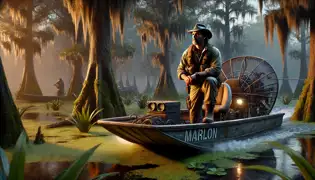
The First Encounter
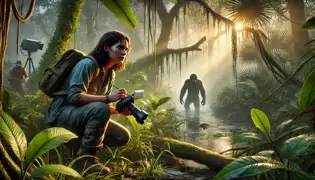
The Investigation Begins
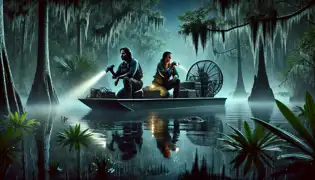
Journey into the Heart of the Everglades
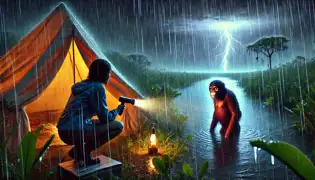
The Stench that Shook the Night
Aftermath and the Legacy
Epilogue: The Legend Lives On

















